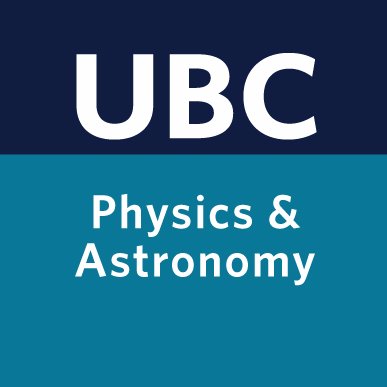2021 - Ongoing
A collaboration with the Belkin, the Stewart Blusson Quantum Matter Institute and the Department of Physics and Astronomy at UBC
Ars Scientia: Merging Artistic Practice with Scientific Research
-
Justine A. Chambers
ParticipantJustine A. Chambers is an artist and educator living and working on the unceded Coast Salish territories of the Squamish, Musqueam and Tsleil-Waututh Nations. Her movement-based practice considers how choreography can be an empathic practice rooted in collaborative creation, close observation, and the body as a site of a cumulative embodied archive. Privileging what is felt over what is seen, she works with dances “that are already there”–the social choreographies present in the everyday. Her choreographic projects have been presented at Libby Leshgold Gallery (Vancouver), Culture Days (Toronto), Contemporary Art Gallery (Vancouver), Helen and Morris Belkin Gallery (Vancouver), Sophiensaele (Berlin), Nanaimo Art Gallery, Artspeak (Vancouver), Hong Kong Arts Festival, Art Museum at the University of Toronto, Cantor Fitzgerald Gallery at Haverford College (Haverford, PA), Agora de la Danse (Montréal), Festival of New Dance (St. John’s), Mile Zero Dance Society (Edmonton), Dancing on the Edge (Vancouver), Canada Dance Festival (Ottawa), Dance in Vancouver, The Western Front, and the Vancouver Art Gallery. She is Max Tyler-Hite’s mother.
Read More
-
Andrea Damascelli
Co-leadAndrea Damascelli, Professor and Tier I Canada Research Chair in the Electronic Structure of Quantum Materials, is Scientific Director of the Stewart Blusson Quantum Matter Institute (Blusson QMI) at UBC and Co-Director of the Max Planck-UBC-UTokyo Centre for Quantum Materials. Damascelli works in one of the most advanced areas of condensed matter physics: quantum materials. His work has gained global recognition and helped make Canada a leader in the field of photoelectron spectroscopy — a highly sophisticated technique that images the energy and velocity of electrons propagating inside a material. As a physicist, he has always been passionate about the arts and humanities, and has long looked for creative ways to bring the disciplines together. Ars Scientia is an important step towards this vision.
Read More
-
James Day
CoordinatorJames Day is an experimental physicist and research associate with the Quantum Matter Institute. He completed his PhD from the University of Alberta in 2008, and spent his time there exploring the fundamental properties of quantum solid helium-4. He has been at UBC, in various capacities, ever since. His expertise is in low temperature physics, scanning tunneling microscopy, microwave spectroscopy and physics education. Roughly speaking, he studies how electrons behave in exotic materials, and how students behave in first-year physics labs. He loves science outreach, cares deeply about equitable learning and continually attempts to do better.
Read More
-
Rysa Greenwood
Participant -
Alannah Hallas
ParticipantAlannah Hallas is an Assistant Professor in the Department of Physics, UBC. She heads the Quantum Materials Design Lab, part of the Stewart Blusson Quantum Matter Institute. Before coming to UBC, Hallas completed her PhD in physics as a Vanier Scholar at McMaster University and was the Smalley Postdoctoral Fellow at Rice University. Having worked in both physics and chemistry departments, Hallas is passionate about taking an interdisciplinary approach to the study of quantum materials.
Read More
-
Jeremy Heyl
Co-leadJeremy Heyl is a Professor in the Department of Physics and Astronomy at UBC. His recent research has focused on compact objects: white dwarfs, neutron stars and black holes. These are the most extreme objects in the universe. Astrophysicists think that they provide the power behind quasars and gamma-ray bursts, the brightest objects in the recent universe. His team discovered that stars like the Sun lose much of their mass in the final million years of nuclear burning, not gradually over a billion years as previously thought. He discovered waves in the oceans of neutron stars (yes, neutron stars have oceans) and the fate of our Galaxy after it collides with the Andromeda galaxy). Hint: there will be no Milky Way after that happens!
Read More
-
Daniel Korchinski
Participant -
Josephine Lee
ParticipantJosephine Lee is a first-generation immigrant whose work is largely informed by a lifetime of movement across Canada and the United States. Lee’s interdisciplinary practice explores the psychic violence of cultural assimilation and nationalism. Her performances, installations, and sculptures shift between an intersectional analysis of this violence at the scale of a nation (where nuclear tests, land-seizures, and xenophobia exacerbate one another) and of the home (where the burdens of identity and generational trauma can be foundational and inescapable). Lee holds graduate and undergraduate degrees in science and fine arts. She has exhibited throughout Canada and the United States, as well as performed at documenta 14 in Kassel, Germany. Recently, Lee was awarded the Oscar Kolin Fellowship, the Vera G. List Sculpture Award, and a Gail and Stephen A. Jarislowsky Outstanding Artist Award at the BANFF Centre for Arts and Creativity. Lee currently resides within the stolen territory of the Coast Salish Peoples, including the territories of the xʷməθkwəy̓əm (Musqueam), Skwxwú7mesh (Squamish), and Səl̓ílwətaʔ/Selilwitulh (Tsleil-Waututh) Nations.
Read More
-
Khan Lee
ParticipantKhan Lee was born in Seoul, Korea. He studied architecture at Hong-Ik University, before immigrating to Canada to study fine art at Emily Carr Institute of Art and Design. He works in performance, media, sculpture and drawing. His practice involves experimentation with form and process in order to express inherent relationships between material and immaterial content. He is a founding member of the Vancouver-based artist collective ‘Intermission’ and is presently a member of ‘Instant Coffee’ artist collective. His work has been exhibited nationally, and internationally. Lee lives and works in Vancouver, BC.
Read More
-
Kelly Lycan
ParticipantKelly Lycan is a photo-based installation artist who resides in Vancouver, BC, Canada on the traditional and unceded territories of the Sḵwx̱wú7mesh (Squamish), səl’ilwətaɁɬ (Tsleil Waututh) and xʷməθkʷəy̓əm (Musqueam) Nations. Lycan’s work investigates the way objects and images are placed and displayed in the world and the cycle of value they experience. She employs photography and sculpture in order to engage them beyond medium specificity. Lycan received a Bachelor of Fine Arts from Nova Scotia College of Art and Design and a Master of Fine Arts from the University of California, Santa Barbara, and Los Angeles. Her work has been exhibited across Canada, the US, Europe, and the Middle East, including solo exhibitions at Ag Galerie, Tehran, Iran (2018); Burrard Art Foundation, Vancouver (2016); Susan Hobbs Gallery, Toronto (2015-16); Presentation House Gallery, North Vancouver (2014); SFU Gallery, Burnaby (2014); Or Gallery, Vancouver (2011); and Gallery TPW, Toronto (2009). Lycan also collaborated from 2005-2015 with the artist collective Instant Coffee, a service-oriented artist collective that have exhibited widely.
Read More
-
Kirk Madison
Participant -
Susana Mendez Alcala
Coordinator -
Sarah Morris
Participant -
Luke Reynolds
Participant -
Shelly Rosenblum
Co-leadShelly Rosenblum is Curator of Academic Programs at the Belkin. Inaugurating this position at the Belkin, Rosenblum’s role is to develop programs that increase myriad forms of civic and academic engagement at UBC, the wider Vancouver community and beyond. Rosenblum received her PhD at Brown University and has taught at Brown, Wesleyan and UBC. Her awards include fellowships from the Center for the Humanities, Wesleyan University and a multi-year Presidential Postdoctoral Research Fellowship, Department of English, UBC. She was selected for the Summer Leadership Institute of the Association of Academic Museums and Galleries at the Kellogg School of Management, Northwestern University (2014). Her research interests include issues in contemporary art and museum theory, discourses of the Black Atlantic, critical theory, narrative and performativity. Her teaching covers the 17th to the 21st centuries. She remains active in professional associations related to academic museums and cultural studies, attending international conferences and workshops, and recently completing two terms (six years) on the Board of Directors at the Western Front, Vancouver, including serving as Board President. At UBC, Rosenblum is an Affiliate of the Peter Wall Institute for Advanced Studies.
Read More
-
Emily Wight
Coordinator
The long search for dark matter has put the spotlight on the limitations of human knowledge and technological capability. Confronted with the shortcomings of our established modes of detecting, diagnosing and testing, the search beckons the creation of new ways of learning and knowing. Fusing the praxes of arts and science in the emergent fields of interdisciplinary research, Ars Scientia, a tripartite partnership between UBC’s Stewart Blusson Quantum Matter Institute (SBQMI), the Department of Physics and Astronomy and the Belkin, presents an opportunity to foster new modes of knowledge exchange across the arts, sciences and their pedagogies. Funded by UBC’s Research Excellence Cluster program, Ars Scientia will conduct rich programming and research to address this line of inquiry over the next two years beginning in 2021.
The Ars Scientia research cluster has begun this interdisciplinary work by partnering scientists with artists to conduct six-month residencies that explore the potential for academic art-science collaborations. Artists Justine A. Chambers, Josephine Lee, Khan Lee and Kelly Lycan partnered with physicists Rysa Greenwood, Alannah Hallas, Daniel Korchinski, Kirk Madison, Sarah Morris and Luke Reynolds to identify areas of collaborative research in pursuit of both scientific and artistic aims. These residencies culminated in a research symposium in November 2021 where collaborative findings were shared.
Much of the early programming of Ars Scientia has been in support of Drift: Art and Dark Matter (7 September-5 December 2021) at the Belkin, a residency and exhibition project generated by Agnes Etherington Art Centre, the Arthur B. McDonald Canadian Astroparticle Physics Research Institute and SNOLAB.
Associated Events
Ars Scientia Essay Prize 2025: The Art-Science Connection
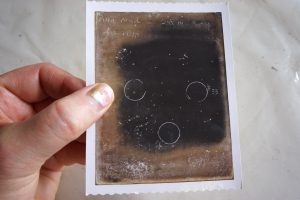 Ars Scientia, UBC’s interdisciplinary initiative at the intersection of art and science, welcomes undergraduate students across campus to participate in our 2025 Essay Prize. This is an opportunity to explore the profound and often catalyzing connections between these two fields.
Ars Scientia, UBC’s interdisciplinary initiative at the intersection of art and science, welcomes undergraduate students across campus to participate in our 2025 Essay Prize. This is an opportunity to explore the profound and often catalyzing connections between these two fields.
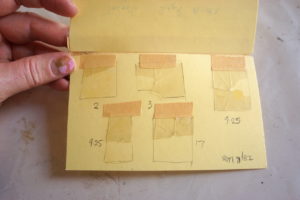 The Ars Scientia research cluster launched a collaborative residency program in 2021, bringing together artists and physicists to interrogate the intersections of art and science. Please join us for our second annual research symposium, encou(n)ters, to learn more about residency experiences and engage in interdisciplinary discussions with our participating artist and physicist investigators. Alongside presentations from Ars Scientia collaborators, we are honoured to invite Kavita Philip for a keynote lecture. UBC’s Research Excellence Cluster program seeded Ars Scientia with the objective of creating programming that fuses the practices of art and science in the emerging field of interdisciplinary research.
The Ars Scientia research cluster launched a collaborative residency program in 2021, bringing together artists and physicists to interrogate the intersections of art and science. Please join us for our second annual research symposium, encou(n)ters, to learn more about residency experiences and engage in interdisciplinary discussions with our participating artist and physicist investigators. Alongside presentations from Ars Scientia collaborators, we are honoured to invite Kavita Philip for a keynote lecture. UBC’s Research Excellence Cluster program seeded Ars Scientia with the objective of creating programming that fuses the practices of art and science in the emerging field of interdisciplinary research.
Artist Talks: JG Mair, Scott Billings and Timothy Taylor
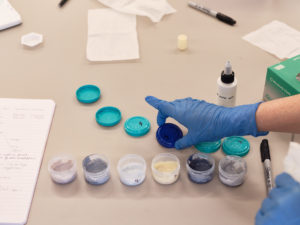 Join us for a series of artist talks hosted at the UBC’s Stewart Blusson Quantum Matter Institute (Blusson QMI). Our current cohort of Ars Scientia artists-in-residence have formed collaborative partnerships with scientists and engineers embedded in Blusson QMI.
Join us for a series of artist talks hosted at the UBC’s Stewart Blusson Quantum Matter Institute (Blusson QMI). Our current cohort of Ars Scientia artists-in-residence have formed collaborative partnerships with scientists and engineers embedded in Blusson QMI.
Blue and Goldcast, Episode 35: Ars Scientia Discussion with Daniel Korchinski and Josephine Lee
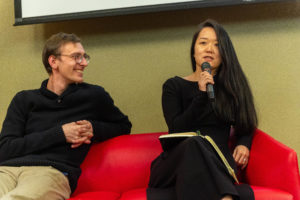 UBC President Santa Ono speaks with Ars Scientia participants Daniel Korchinski and Josephine Lee about their collaboration in the residency program.
UBC President Santa Ono speaks with Ars Scientia participants Daniel Korchinski and Josephine Lee about their collaboration in the residency program.
Symposium: Signals and Apparatuses
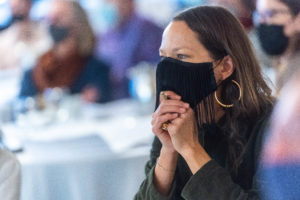 Beginning in May 2021, the Ars Scientia research cluster connected artists with physicists in a collaborative residency program to discuss and explore the intersections between the disciplines of art and science. On Thursday, 25 November 2021, the groups convened at a research symposium, Signals and Apparatuses, to share their experiences in the residency and engage in an interdisciplinary discussion with the academic community at UBC. Denise Ferreira da Silva offered opening remarks, which were followed by a discussion with Drift exhibition artist Nadia Lichtig and graduate student Rhea Gaur, alongside presentations from Ars Scientia collaborators.
Beginning in May 2021, the Ars Scientia research cluster connected artists with physicists in a collaborative residency program to discuss and explore the intersections between the disciplines of art and science. On Thursday, 25 November 2021, the groups convened at a research symposium, Signals and Apparatuses, to share their experiences in the residency and engage in an interdisciplinary discussion with the academic community at UBC. Denise Ferreira da Silva offered opening remarks, which were followed by a discussion with Drift exhibition artist Nadia Lichtig and graduate student Rhea Gaur, alongside presentations from Ars Scientia collaborators.
Artist Talks with Justine A. Chambers, Josephine Lee, Khan Lee and Kelly Lycan
 Artists Justine A. Chambers, Josephine Lee, Khan Lee and Kelly Lycan partnered with physicists Rysa Greenwood, Alannah Hallas, Daniel Korchinski, Kirk Madison, Sarah Morris and Luke Reynolds to identify areas of collaborative research in pursuit of both scientific and artistic aims, which culminated in a symposium in November 2021 where collaborative findings were shared. Over the course of the fall semester Ars Scientia artists presented talks reflecting on their practices and early engagements in the residency.
Artists Justine A. Chambers, Josephine Lee, Khan Lee and Kelly Lycan partnered with physicists Rysa Greenwood, Alannah Hallas, Daniel Korchinski, Kirk Madison, Sarah Morris and Luke Reynolds to identify areas of collaborative research in pursuit of both scientific and artistic aims, which culminated in a symposium in November 2021 where collaborative findings were shared. Over the course of the fall semester Ars Scientia artists presented talks reflecting on their practices and early engagements in the residency.
Sensorial Walk with Holly Schmidt, September 2021
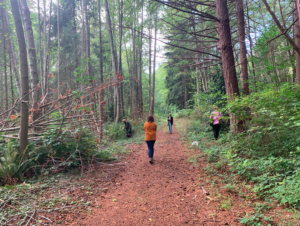 Holly Schmidt, the Outdoor Art Program artist in residence at the Belkin, guided a sensorial walk with the Ars Scientia research cluster. Exploring the different areas of UBC Farm, she took artists and physicists through various exercises in sound, smell and touch within the natural landscape of the forested area. Written scores, sculptures and even new vocabulary for describing sensorial experience were made and shared, bringing attention to the various channels through which observation is conducted in the respective, yet often connected disciplines of art and science.
Holly Schmidt, the Outdoor Art Program artist in residence at the Belkin, guided a sensorial walk with the Ars Scientia research cluster. Exploring the different areas of UBC Farm, she took artists and physicists through various exercises in sound, smell and touch within the natural landscape of the forested area. Written scores, sculptures and even new vocabulary for describing sensorial experience were made and shared, bringing attention to the various channels through which observation is conducted in the respective, yet often connected disciplines of art and science.
Image (above): Josephine Lee, /born ignorant in an abyss of light (still), glass, plasma, porcelain, video, 2020, https://vimeo.com/510867217
-
Justine A. Chambers
ParticipantJustine A. Chambers is an artist and educator living and working on the unceded Coast Salish territories of the Squamish, Musqueam and Tsleil-Waututh Nations. Her movement-based practice considers how choreography can be an empathic practice rooted in collaborative creation, close observation, and the body as a site of a cumulative embodied archive. Privileging what is felt over what is seen, she works with dances “that are already there”–the social choreographies present in the everyday. Her choreographic projects have been presented at Libby Leshgold Gallery (Vancouver), Culture Days (Toronto), Contemporary Art Gallery (Vancouver), Helen and Morris Belkin Gallery (Vancouver), Sophiensaele (Berlin), Nanaimo Art Gallery, Artspeak (Vancouver), Hong Kong Arts Festival, Art Museum at the University of Toronto, Cantor Fitzgerald Gallery at Haverford College (Haverford, PA), Agora de la Danse (Montréal), Festival of New Dance (St. John’s), Mile Zero Dance Society (Edmonton), Dancing on the Edge (Vancouver), Canada Dance Festival (Ottawa), Dance in Vancouver, The Western Front, and the Vancouver Art Gallery. She is Max Tyler-Hite’s mother.
Read More
-
Andrea Damascelli
Co-leadAndrea Damascelli, Professor and Tier I Canada Research Chair in the Electronic Structure of Quantum Materials, is Scientific Director of the Stewart Blusson Quantum Matter Institute (Blusson QMI) at UBC and Co-Director of the Max Planck-UBC-UTokyo Centre for Quantum Materials. Damascelli works in one of the most advanced areas of condensed matter physics: quantum materials. His work has gained global recognition and helped make Canada a leader in the field of photoelectron spectroscopy — a highly sophisticated technique that images the energy and velocity of electrons propagating inside a material. As a physicist, he has always been passionate about the arts and humanities, and has long looked for creative ways to bring the disciplines together. Ars Scientia is an important step towards this vision.
Read More
-
James Day
CoordinatorJames Day is an experimental physicist and research associate with the Quantum Matter Institute. He completed his PhD from the University of Alberta in 2008, and spent his time there exploring the fundamental properties of quantum solid helium-4. He has been at UBC, in various capacities, ever since. His expertise is in low temperature physics, scanning tunneling microscopy, microwave spectroscopy and physics education. Roughly speaking, he studies how electrons behave in exotic materials, and how students behave in first-year physics labs. He loves science outreach, cares deeply about equitable learning and continually attempts to do better.
Read More
-
Rysa Greenwood
Participant -
Alannah Hallas
ParticipantAlannah Hallas is an Assistant Professor in the Department of Physics, UBC. She heads the Quantum Materials Design Lab, part of the Stewart Blusson Quantum Matter Institute. Before coming to UBC, Hallas completed her PhD in physics as a Vanier Scholar at McMaster University and was the Smalley Postdoctoral Fellow at Rice University. Having worked in both physics and chemistry departments, Hallas is passionate about taking an interdisciplinary approach to the study of quantum materials.
Read More
-
Jeremy Heyl
Co-leadJeremy Heyl is a Professor in the Department of Physics and Astronomy at UBC. His recent research has focused on compact objects: white dwarfs, neutron stars and black holes. These are the most extreme objects in the universe. Astrophysicists think that they provide the power behind quasars and gamma-ray bursts, the brightest objects in the recent universe. His team discovered that stars like the Sun lose much of their mass in the final million years of nuclear burning, not gradually over a billion years as previously thought. He discovered waves in the oceans of neutron stars (yes, neutron stars have oceans) and the fate of our Galaxy after it collides with the Andromeda galaxy). Hint: there will be no Milky Way after that happens!
Read More
-
Daniel Korchinski
Participant -
Josephine Lee
ParticipantJosephine Lee is a first-generation immigrant whose work is largely informed by a lifetime of movement across Canada and the United States. Lee’s interdisciplinary practice explores the psychic violence of cultural assimilation and nationalism. Her performances, installations, and sculptures shift between an intersectional analysis of this violence at the scale of a nation (where nuclear tests, land-seizures, and xenophobia exacerbate one another) and of the home (where the burdens of identity and generational trauma can be foundational and inescapable). Lee holds graduate and undergraduate degrees in science and fine arts. She has exhibited throughout Canada and the United States, as well as performed at documenta 14 in Kassel, Germany. Recently, Lee was awarded the Oscar Kolin Fellowship, the Vera G. List Sculpture Award, and a Gail and Stephen A. Jarislowsky Outstanding Artist Award at the BANFF Centre for Arts and Creativity. Lee currently resides within the stolen territory of the Coast Salish Peoples, including the territories of the xʷməθkwəy̓əm (Musqueam), Skwxwú7mesh (Squamish), and Səl̓ílwətaʔ/Selilwitulh (Tsleil-Waututh) Nations.
Read More
-
Khan Lee
ParticipantKhan Lee was born in Seoul, Korea. He studied architecture at Hong-Ik University, before immigrating to Canada to study fine art at Emily Carr Institute of Art and Design. He works in performance, media, sculpture and drawing. His practice involves experimentation with form and process in order to express inherent relationships between material and immaterial content. He is a founding member of the Vancouver-based artist collective ‘Intermission’ and is presently a member of ‘Instant Coffee’ artist collective. His work has been exhibited nationally, and internationally. Lee lives and works in Vancouver, BC.
Read More
-
Kelly Lycan
ParticipantKelly Lycan is a photo-based installation artist who resides in Vancouver, BC, Canada on the traditional and unceded territories of the Sḵwx̱wú7mesh (Squamish), səl’ilwətaɁɬ (Tsleil Waututh) and xʷməθkʷəy̓əm (Musqueam) Nations. Lycan’s work investigates the way objects and images are placed and displayed in the world and the cycle of value they experience. She employs photography and sculpture in order to engage them beyond medium specificity. Lycan received a Bachelor of Fine Arts from Nova Scotia College of Art and Design and a Master of Fine Arts from the University of California, Santa Barbara, and Los Angeles. Her work has been exhibited across Canada, the US, Europe, and the Middle East, including solo exhibitions at Ag Galerie, Tehran, Iran (2018); Burrard Art Foundation, Vancouver (2016); Susan Hobbs Gallery, Toronto (2015-16); Presentation House Gallery, North Vancouver (2014); SFU Gallery, Burnaby (2014); Or Gallery, Vancouver (2011); and Gallery TPW, Toronto (2009). Lycan also collaborated from 2005-2015 with the artist collective Instant Coffee, a service-oriented artist collective that have exhibited widely.
Read More
-
Kirk Madison
Participant -
Susana Mendez Alcala
Coordinator -
Sarah Morris
Participant -
Luke Reynolds
Participant -
Shelly Rosenblum
Co-leadShelly Rosenblum is Curator of Academic Programs at the Belkin. Inaugurating this position at the Belkin, Rosenblum’s role is to develop programs that increase myriad forms of civic and academic engagement at UBC, the wider Vancouver community and beyond. Rosenblum received her PhD at Brown University and has taught at Brown, Wesleyan and UBC. Her awards include fellowships from the Center for the Humanities, Wesleyan University and a multi-year Presidential Postdoctoral Research Fellowship, Department of English, UBC. She was selected for the Summer Leadership Institute of the Association of Academic Museums and Galleries at the Kellogg School of Management, Northwestern University (2014). Her research interests include issues in contemporary art and museum theory, discourses of the Black Atlantic, critical theory, narrative and performativity. Her teaching covers the 17th to the 21st centuries. She remains active in professional associations related to academic museums and cultural studies, attending international conferences and workshops, and recently completing two terms (six years) on the Board of Directors at the Western Front, Vancouver, including serving as Board President. At UBC, Rosenblum is an Affiliate of the Peter Wall Institute for Advanced Studies.
Read More
-
Emily Wight
Coordinator
Partners
Related
-
Event
Ars Scientia Essay Prize 2025: The Art-Science Connection
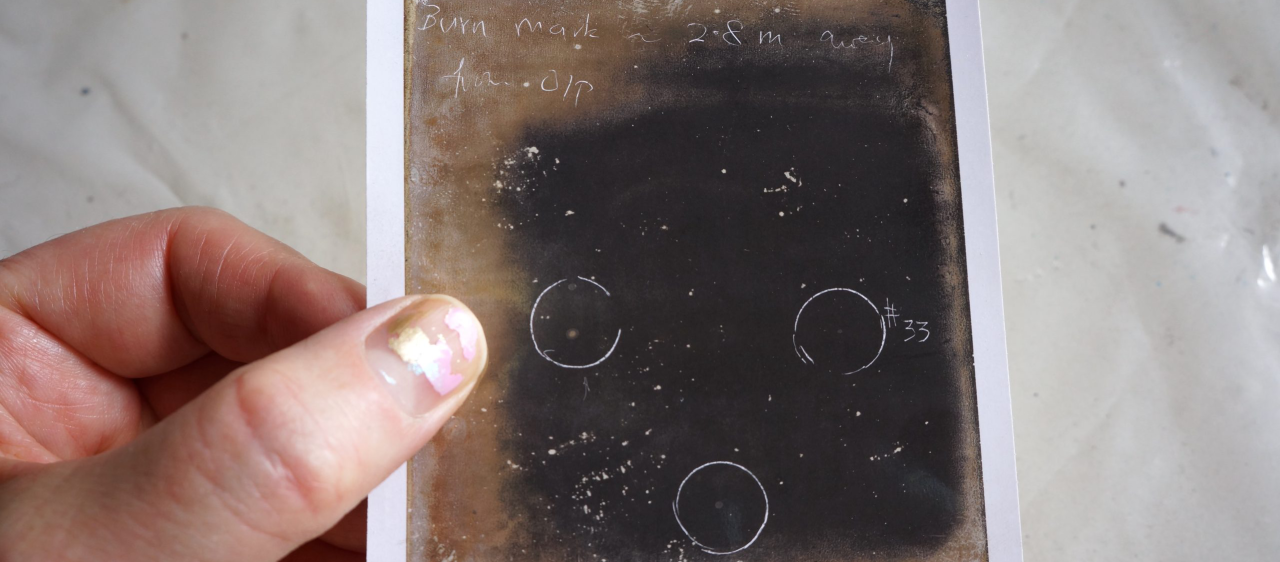
Ars Scientia, UBC’s interdisciplinary initiative at the intersection of art and science, welcomes undergraduate students across campus to participate in our 2025 Essay Prize. This is an opportunity to explore the profound and often catalyzing connections between these two fields.
[more] -
Event
MONDAY 15 MAY 2023 AT 2 PM
Symposium: encou(n)ters
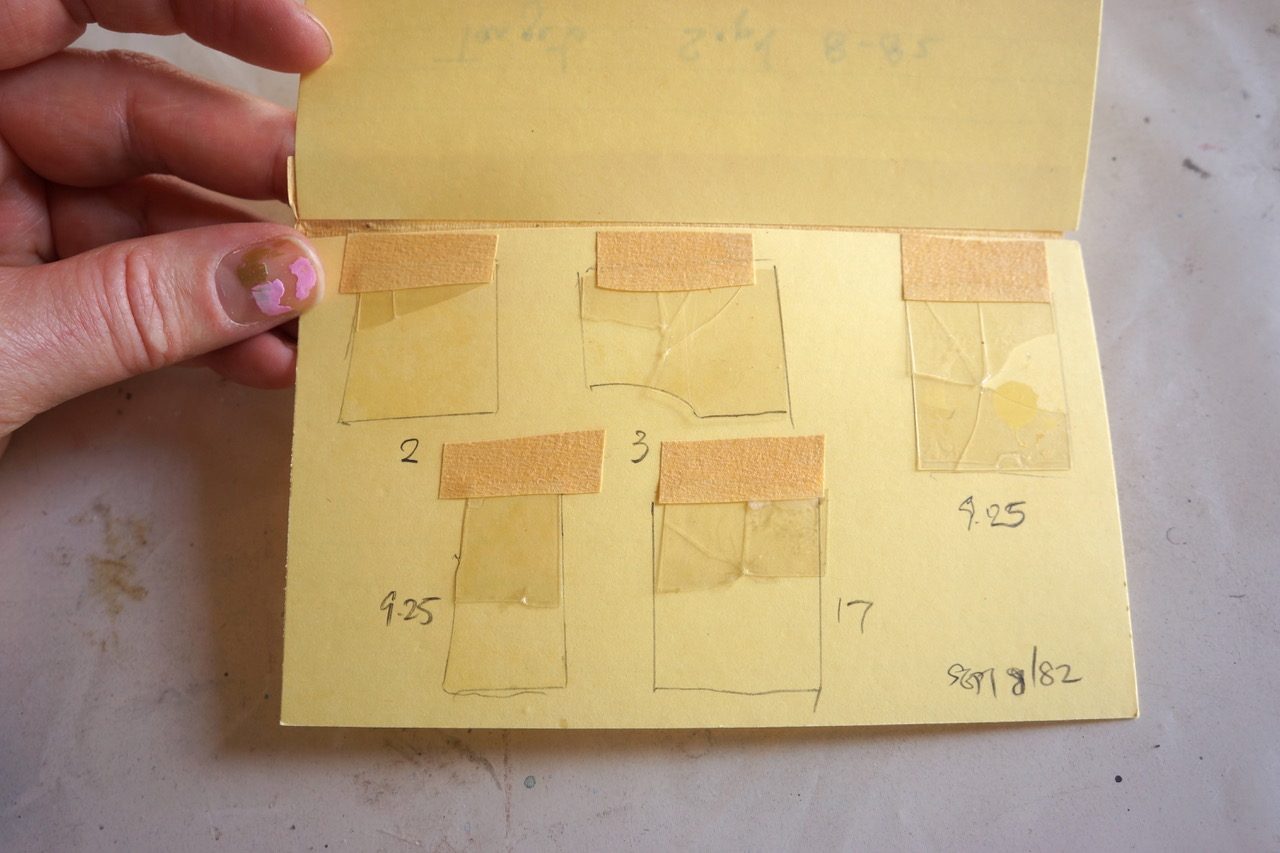
The Ars Scientia research cluster launched a collaborative residency program in 2021, bringing together artists and physicists to interrogate the intersections of art and science. Please joins us for our second annual research symposium, encou(n)ters, to learn more about residency experiences and engage in interdisciplinary discussions with our participating artist and physicist investigators.
[more] -
Event
Thursday 25 Nov 2021 at 2 pm
Symposium: Signals and Apparatuses
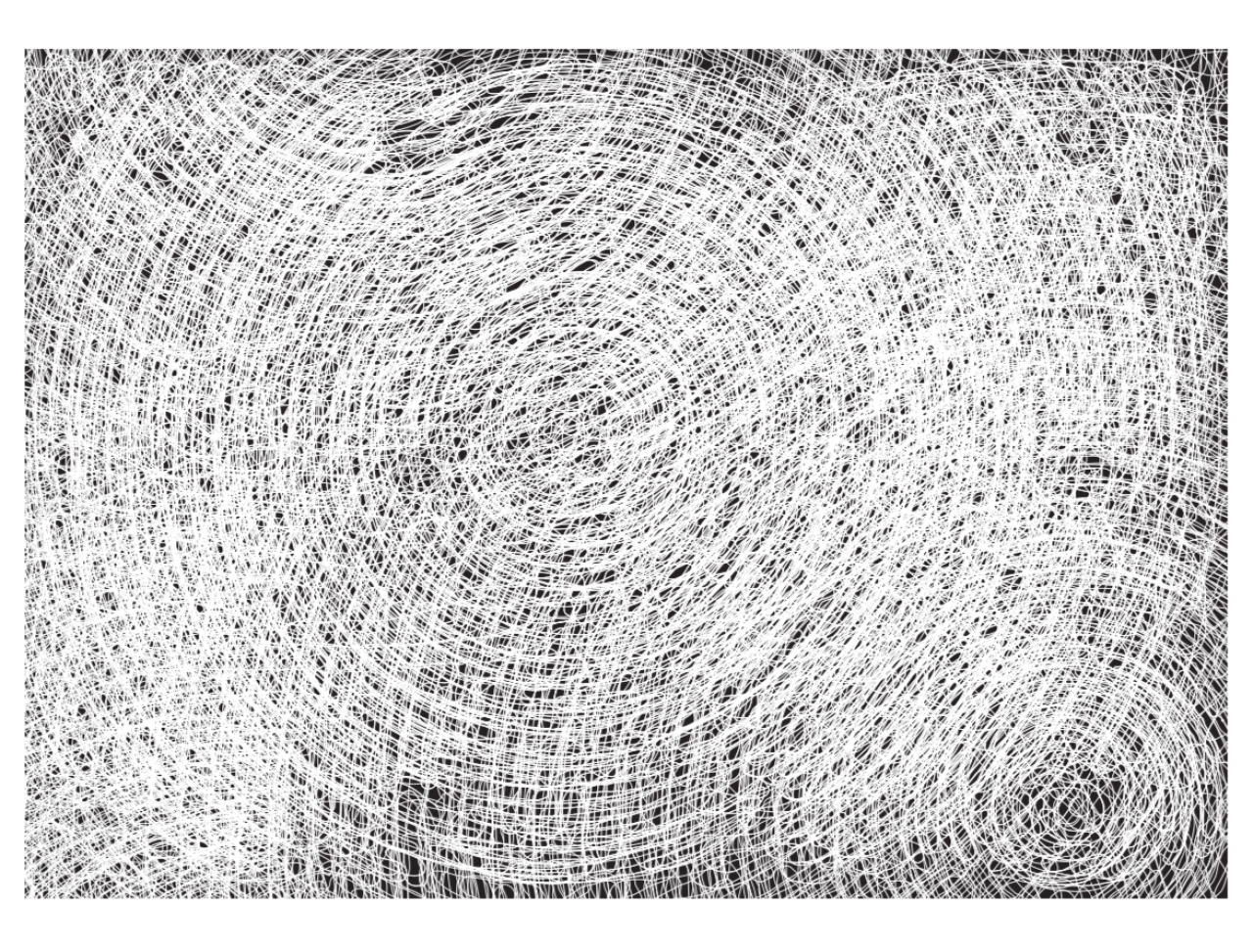
Beginning in May 2021, the Ars Scientia research cluster connected artists with physicists in a collaborative residency program to discuss and explore the intersections between the disciplines of art and science. On Thursday, 25 November 2021, the groups convened at a research symposium, Signals and Apparatuses, to share their experiences in the residency and engage in an interdisciplinary discussion with the academic community at UBC. Denise Ferreira da Silva offered opening remarks, which were followed by a discussion with Drift exhibition artist Nadia Lichtig and graduate student Rhea Gaur, alongside presentations from Ars Scientia collaborators.
[more] -
Exhibition
10 Sep – 05 Dec 2021
Drift: Art and Dark Matter
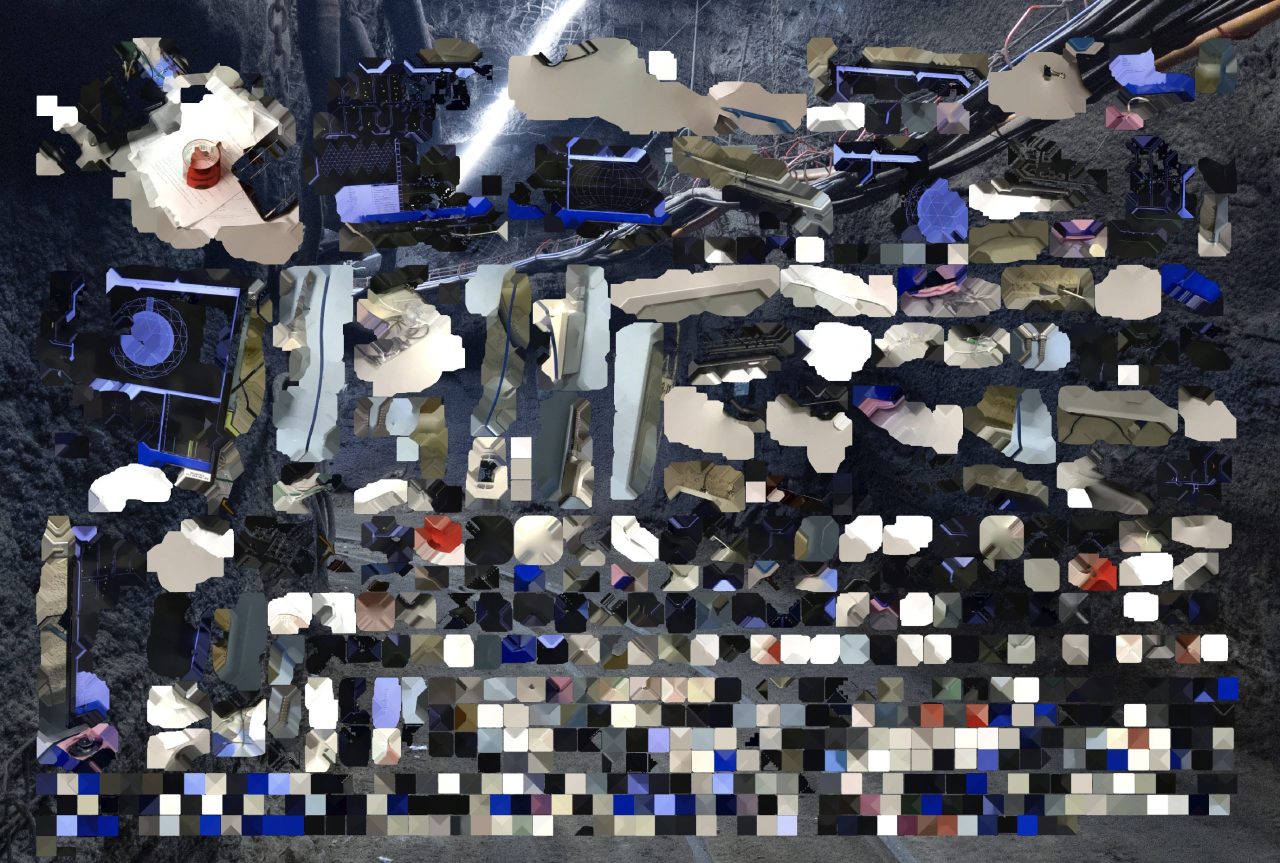
Drift: Art and Dark Matter is a residency and exhibition project generated by Agnes Etherington Art Centre, the Arthur B. McDonald Canadian Astroparticle Physics Research Institute and SNOLAB. Four artists of national and international stature were invited to make new work while engaging with physicists, chemists and engineers contributing to the search for dark matter at SNOLAB’s facility in Sudbury, two kilometres below the surface of the Earth.
[more] -
Exhibition
3 September – 1 December 2019
Spill
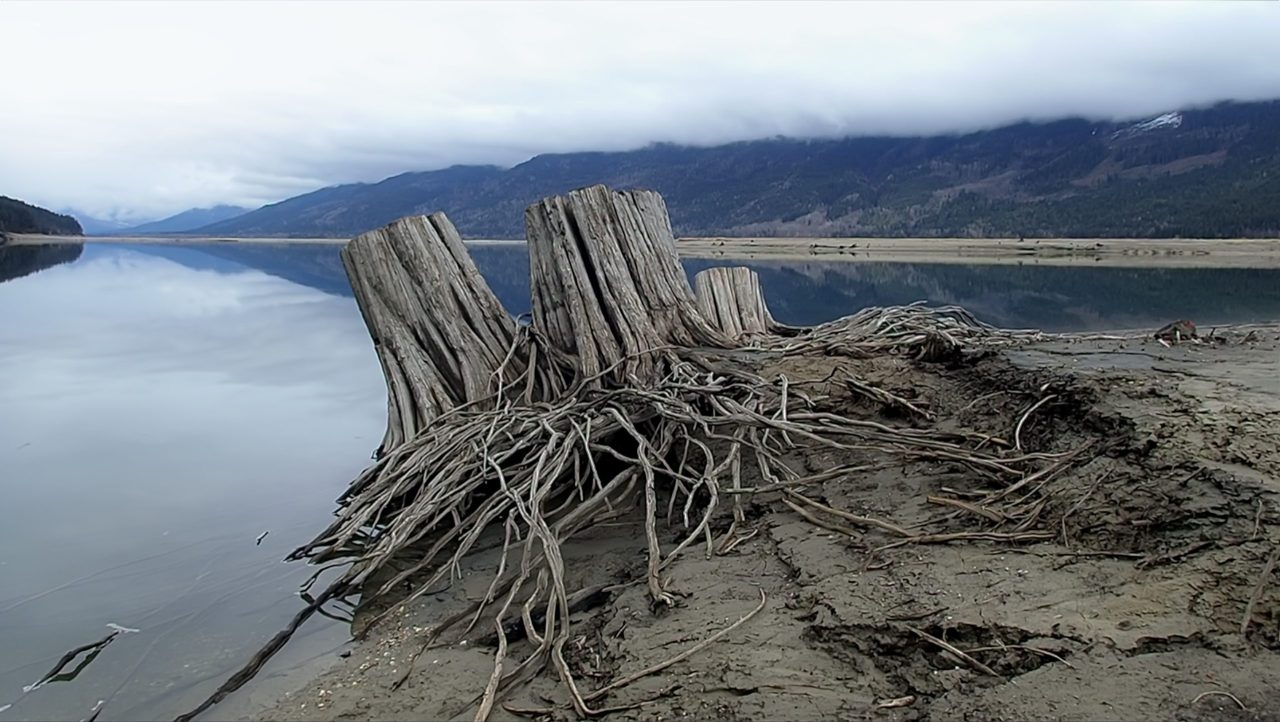
Involving installations, live research, performance and radio programming, Spill is curated by Lorna Brown and presents work by Carolina Caycedo, Nelly César, Guadalupe Martinez, Teresa Montoya, Anne Riley, Genevieve Robertson, Susan Schuppli and T’uy’t’tanat Cease Wyss. Spill: Response, curated by Guadalupe Martinez, re-centres the gallery as a site for embodiment, with visiting artist César in collaboration with Riley and Wyss. Throughout the project, Spill: Radio, curated by Tatiana Mellema, will present radio episodes in collaboration with CiTR 101.9 FM.
[more] -
Event
16-23 October 2019
Spill: Response

Curated by Guadalupe Martinez and part of the Spill exhibition at the Belkin (September 3–December 1, 2019), this live research and performance component brings together activists, performance artists and educators whose practices consider relationships between the body, the land and forms of pedagogy that engage with healing, love and sustainability as core to their methodologies. Spill: Response performs an extension of artists Maria Thereza Alves, Nelly César, Anne Riley, Cease Wyss and Guadalupe Martinez’s artistic practices where histories of protection of the land across the Americas may intertwine and be animated in the present. Working with a group of selected students, the artists will present their research and share their knowledge at the Belkin and surrounding locations on the unceded Musqueam, Squamish and Tsleil-Waututh territories.
[more] -
Event
New episodes every week on Tuesdays, from 3 September-26 November 2019
Spill: Radio
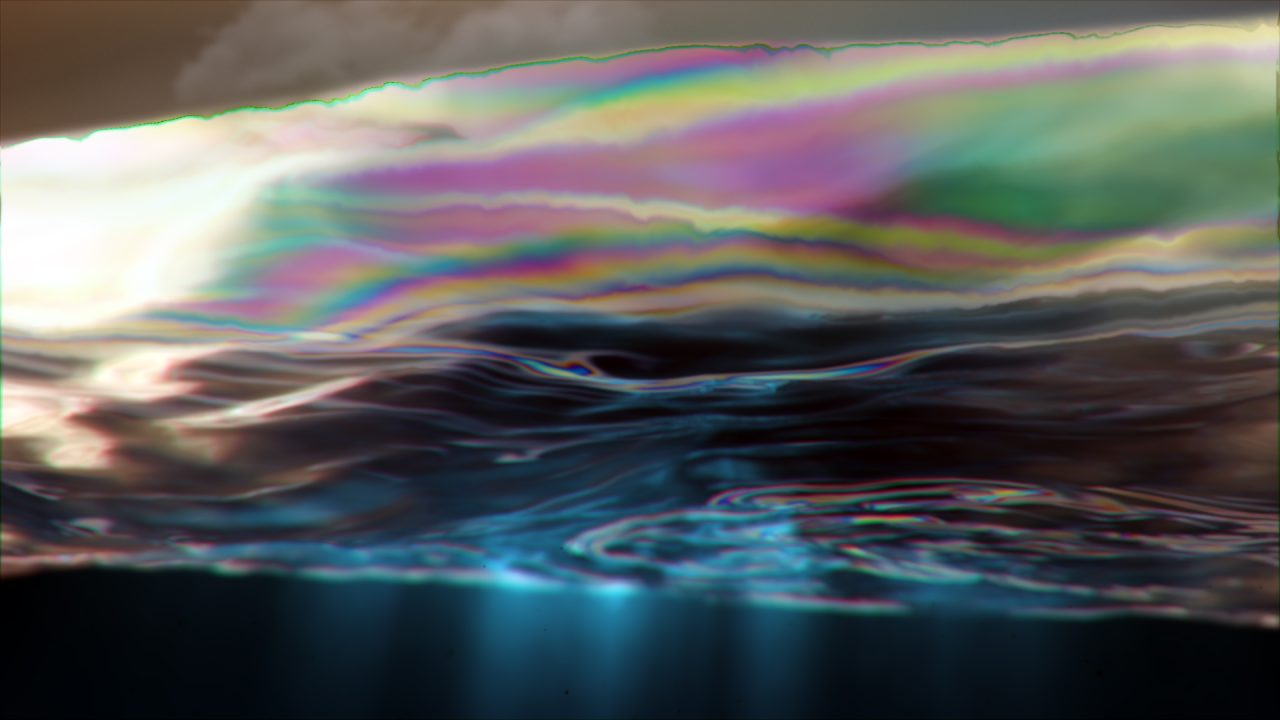
Spill: Radio is a weekly radio show and podcast that anticipates, extends and enriches the themes of the Spill exhibition. For each week of Spill, interviews, readings, performances and field recordings offer insight into artistic processes engaged with the land, territory, extraction and embodied performance. This project engages radio as a site for the relational study of ecosystems and their processes that register the hyper-financialization of the biosphere’s resources. Destabilizing vision as the privileged mode of understanding, Spill Radio seeks to practice ways of listening to the intangible, the submerged and the sensuous in order to imagine and think with our world more complexly. Spill: Radio is curated by Tatiana Mellema and is presented in collaboration with CiTR 101.9 FM. Episodes for each week of the Spill exhibition will be aired on Tuesdays at 10 am on CiTR 101.9 FM and made available for you to download.
[more] -
News
09 Apr 2021
Art and Medicine: Rounding at the Belkin
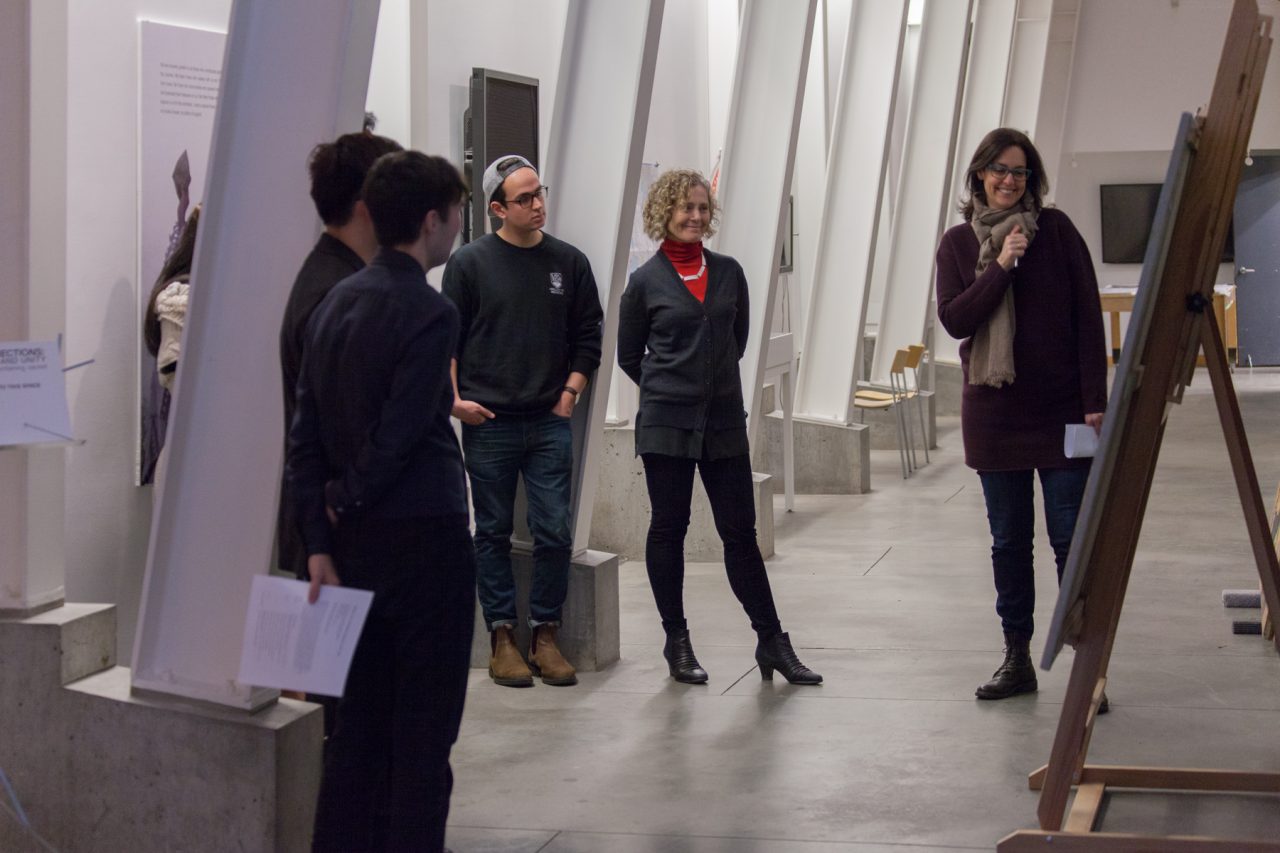
In 2016, Shelly Rosenblum and Carol-Ann Courneya (Assistant Dean of Student Affairs at UBC's Faculty of Medicine) collaborated to create Art and Medicine: Rounding at the Belkin , a course that invited medical students to consider how engaging with art could strengthen observational skills in the sciences.
[more] -
News
07 Feb 2022
Daniel Korchinski Presents on Ars Scientia and Physics
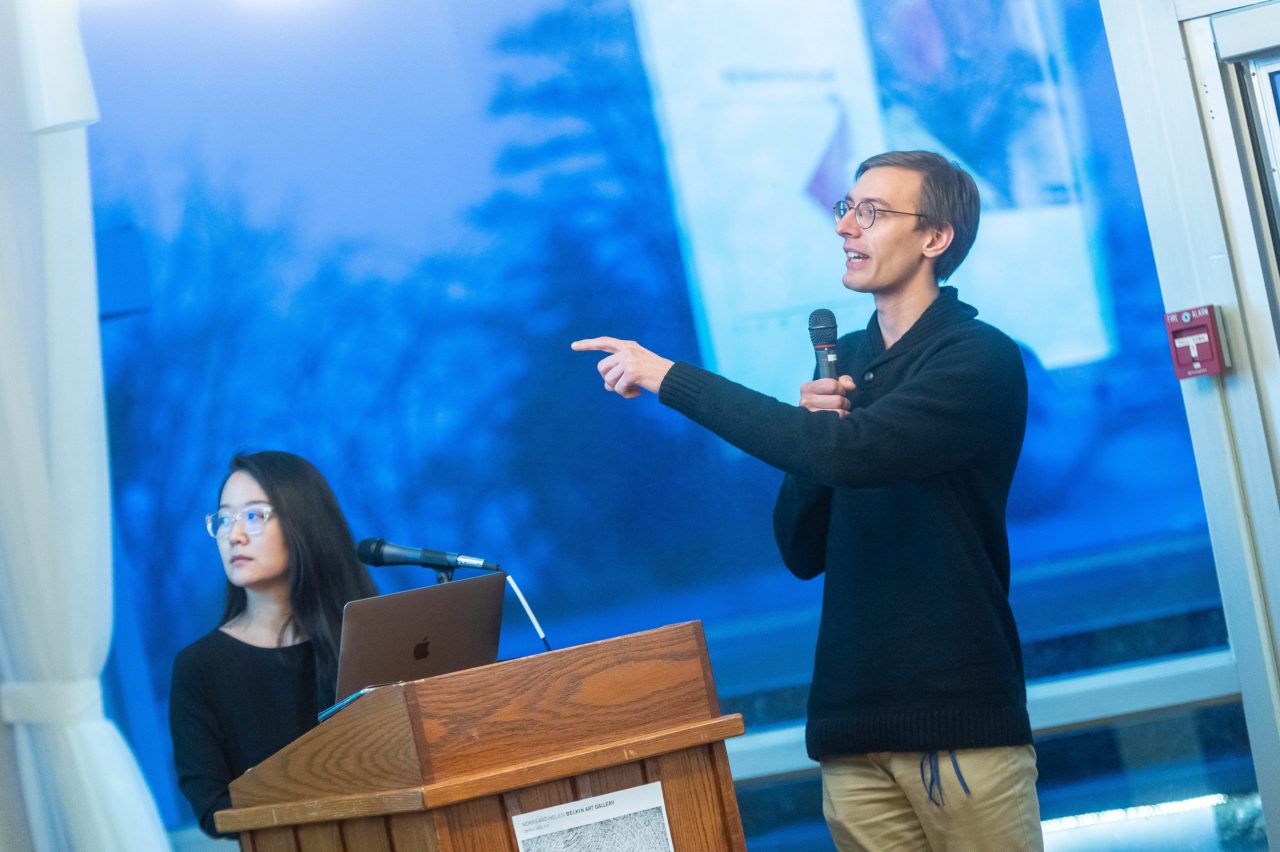
On Thursday, 17 February 2022 at 4 pm, Daniel Korchinski, PhD student at the Stewart Blusson Quantum Matter Institute, will discuss his collaboration with artist Josephine Lee as part of the Ars Scientia residency program, where the two identified points of intersection in their practices through glassblowing.
[more] -
News
08 Jun 2022
Ars Scientia: Student Reflections
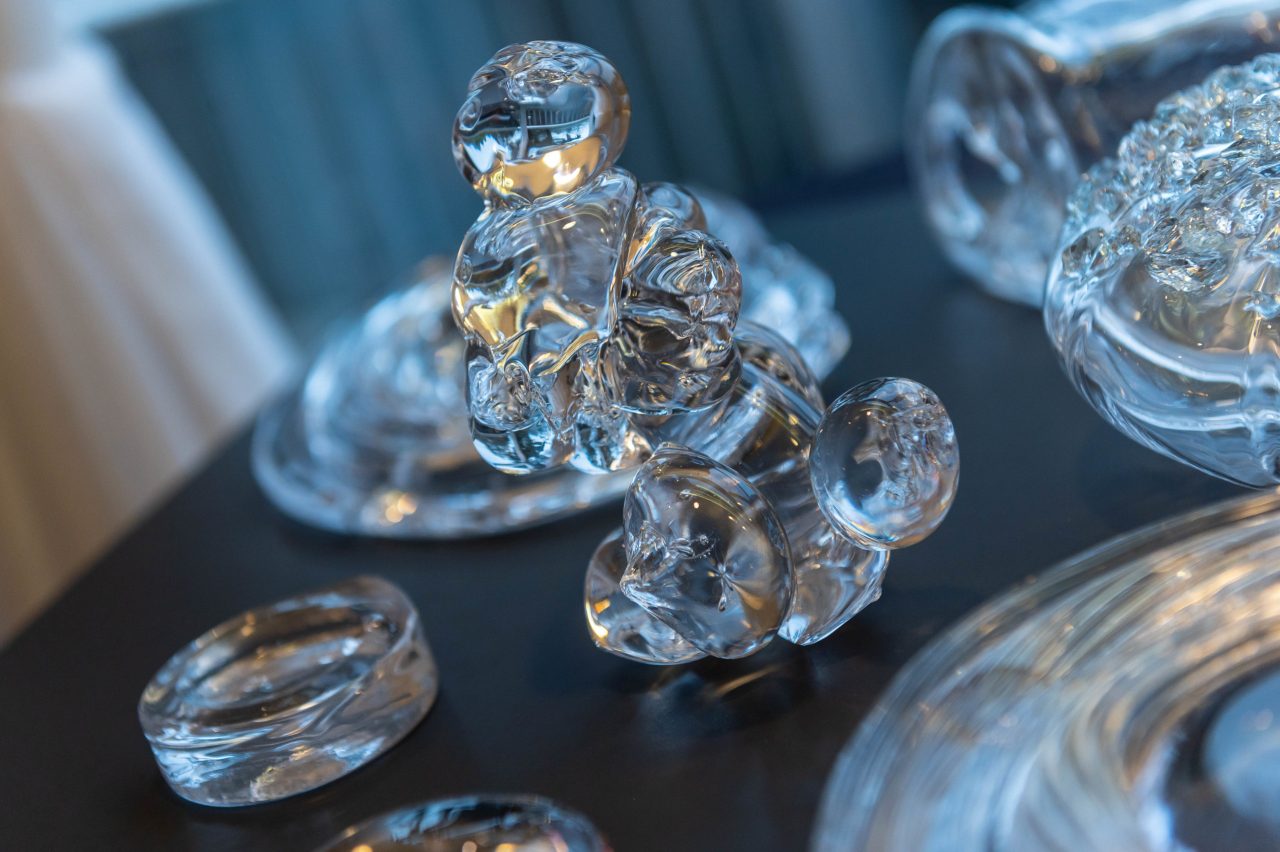 [more]
[more] -
Event
10 Sep 2021
Ars Scientia: Sensorial Walk with Holly Schmidt
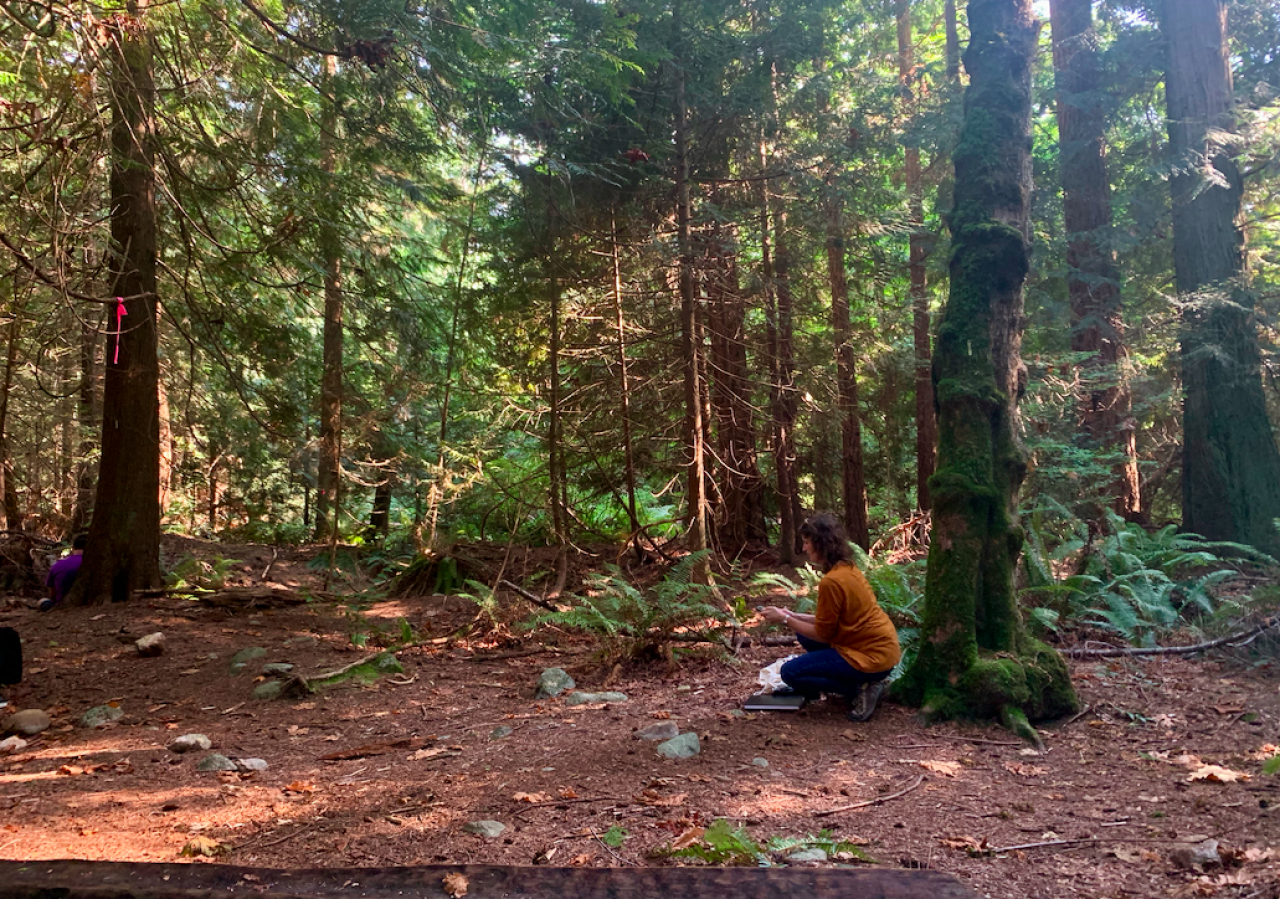
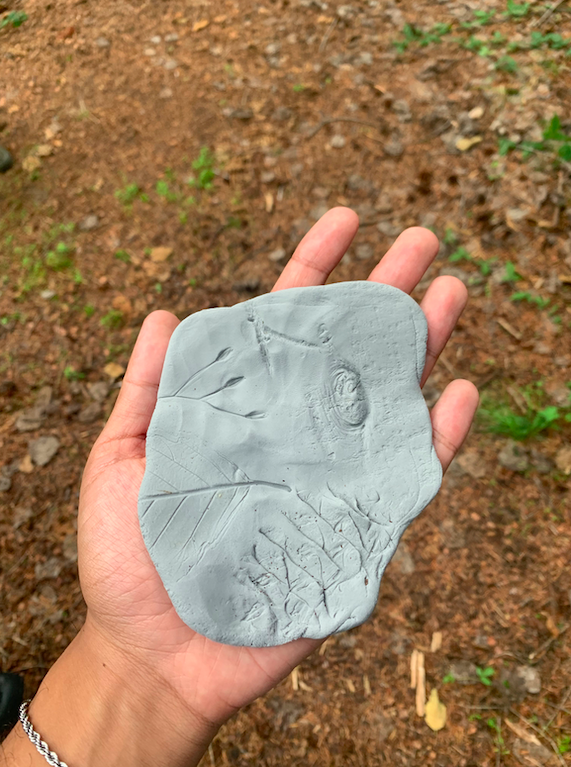


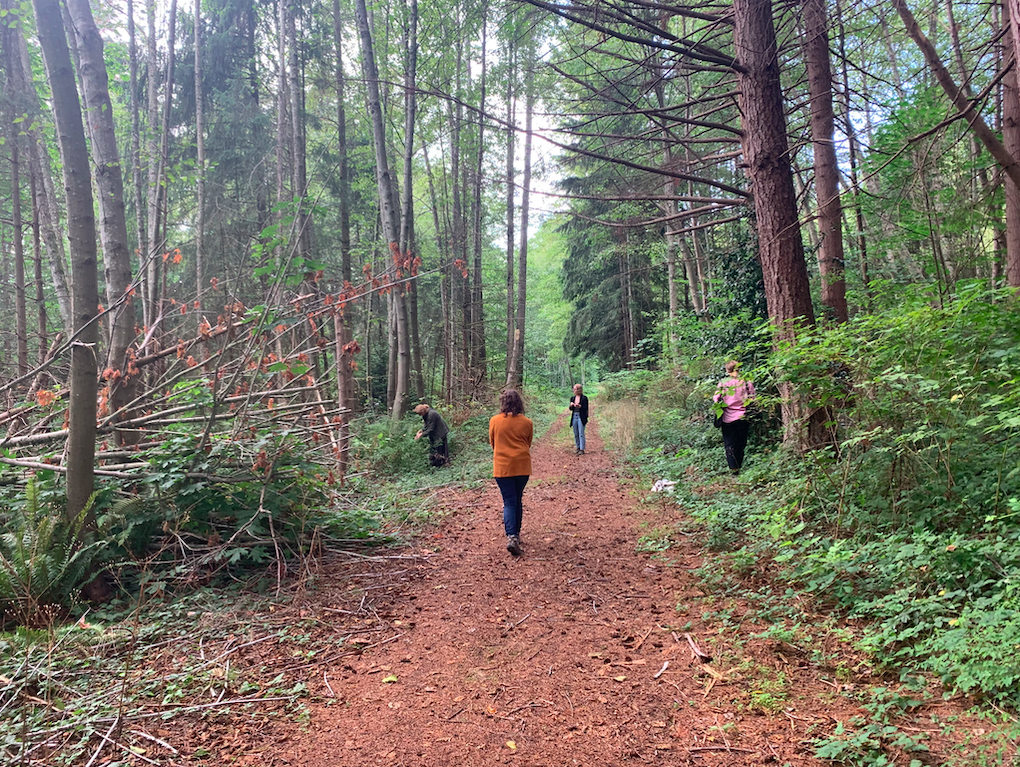 [more]
[more]
-
Event
JG Mair: Tuesday 21 Feb 2023 at 2:00 pm
Timothy Taylor: Tuesday 4 Apr 2023 at 2 pm
Scott Billings: Tuesday 18 Apr 2023 at 3:30 pm
Artist Talks: jg mair, Scott Billings and Timothy Taylor
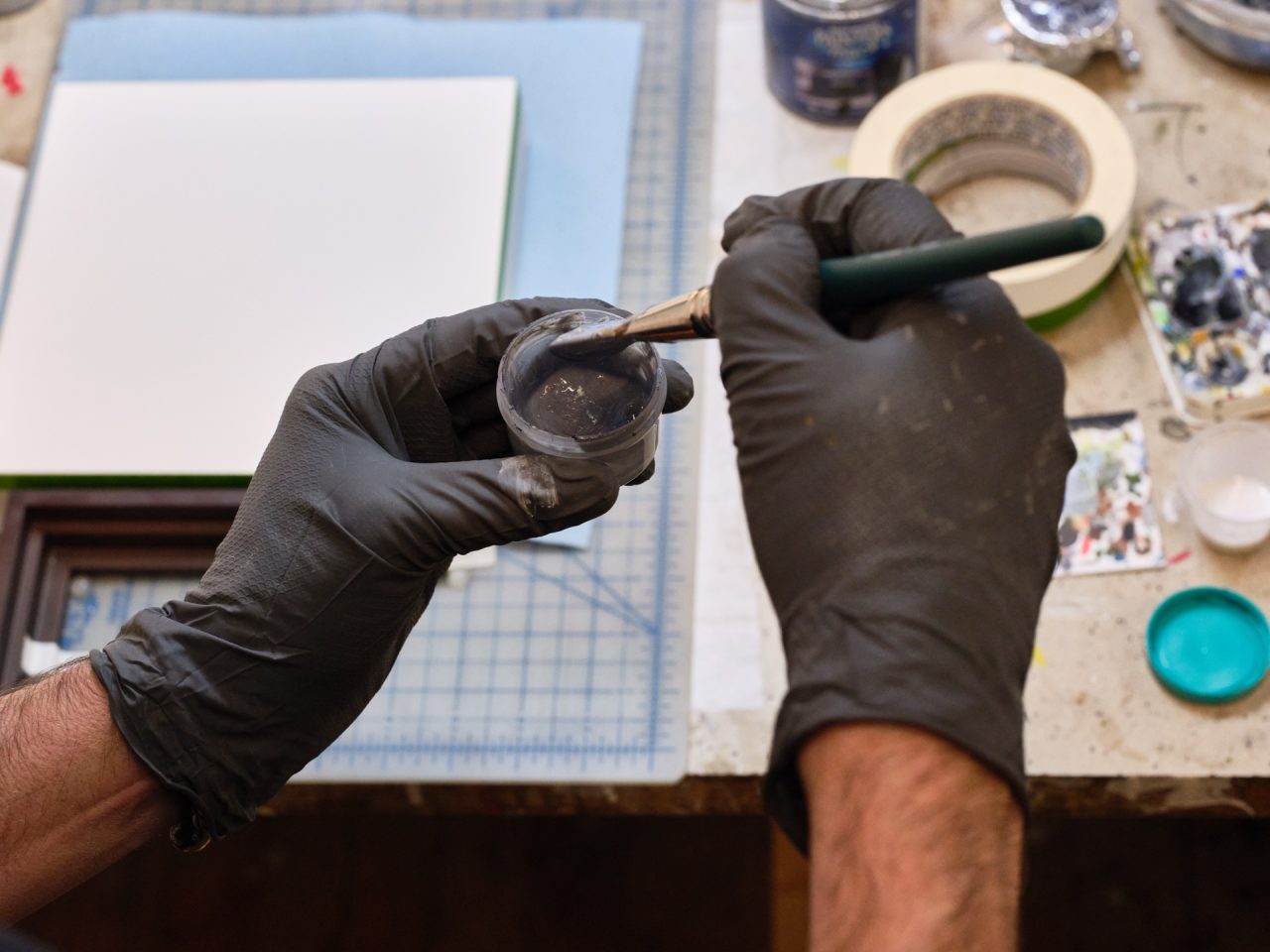
Join us for a series of artist talks hosted at the UBC’s Stewart Blusson Quantum Matter Institute (Blusson QMI). Our current cohort of Ars Scientia artists-in-residence have formed collaborative partnerships with scientists and engineers embedded in Blusson QMI.
[more] -
Event
Monday, 27 Nov 2023 at 3 pm
Artist Talk: Javiera Tejerina-Risso
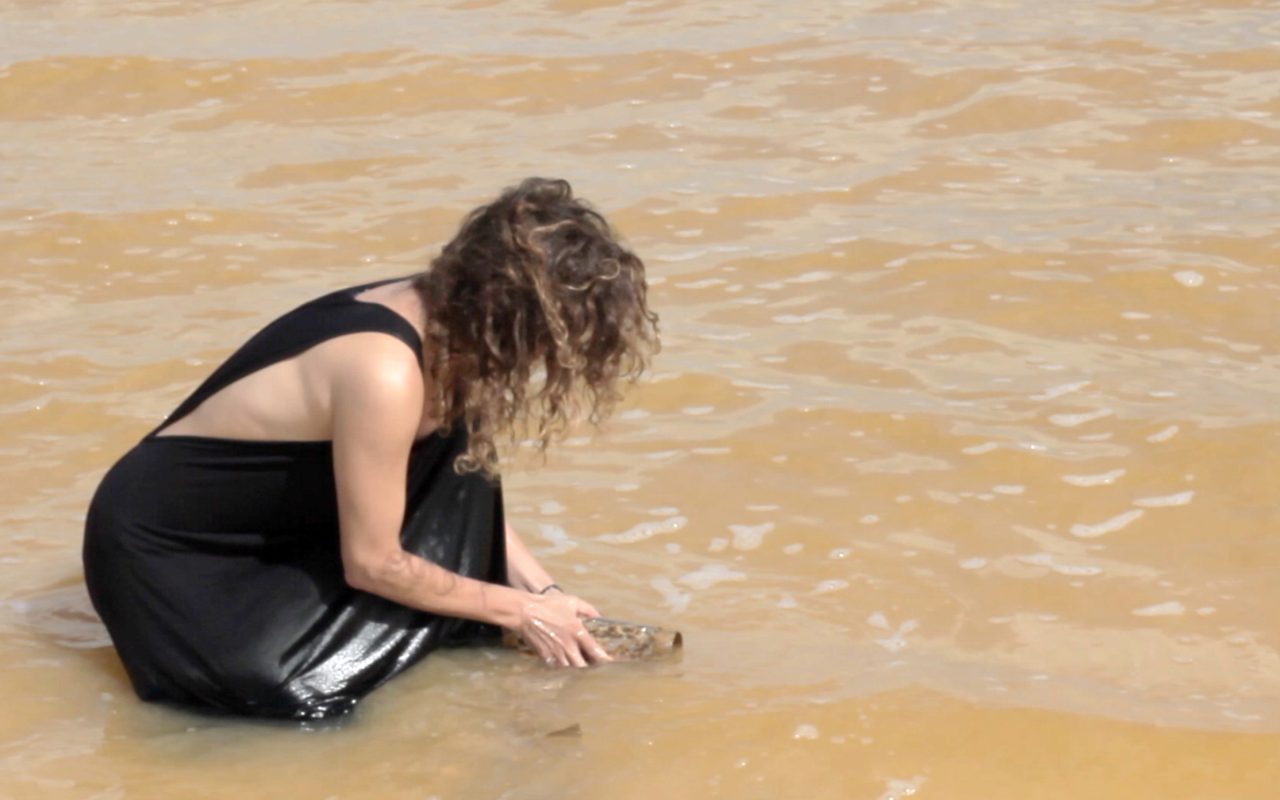
Join us for an artist talk by Ars Scientia artist-in-residence Javiera Tejerina-Risso. Hosted by the Peter Wall Institute for Advanced Studies, Tejerina-Risso will discuss her collaborative partnerships with scientists and engineers while embedded at Blusson QMI. Javiera Tejerina-Risso's artist residency is a partnership between UBC’s Stewart Blusson Quantum Matter Institute, the Department of Physics and Astronomy, and the Morris and Helen Belkin Art Gallery through Quantum Studio, which is part of a larger program of residencies sponsored by the Embassy of France in Western Canada.
[more] -
Event
24 Sep–5 Nov 2021
Artist Talks: Khan Lee, Kelly Lycan, Justine A. Chambers, Josephine Lee
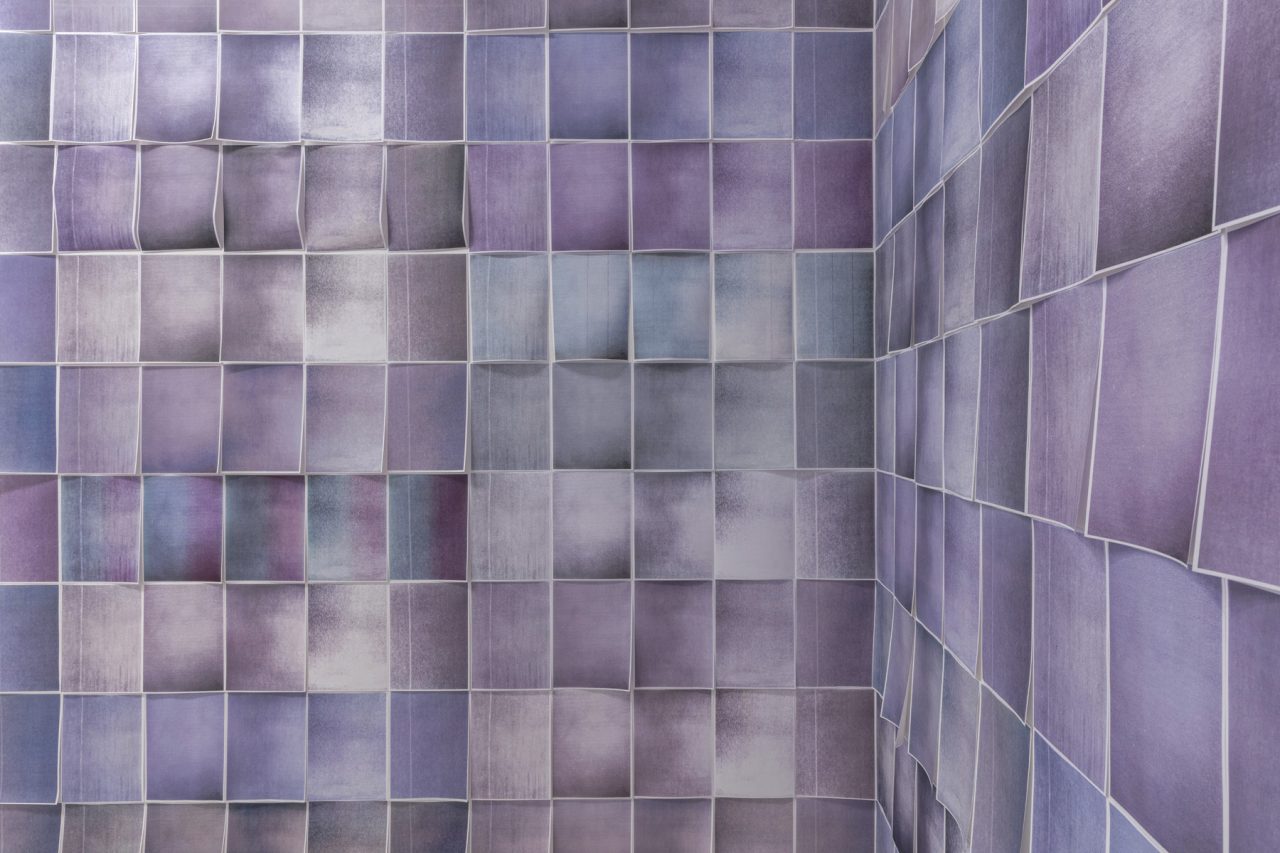
Over the course of the fall semester, artists Justine A. Chambers, Josephine Lee, Khan Lee and Kelly Lycan will present talks reflecting on their practices and early engagements in the Ars Scientia residency.
[more]

